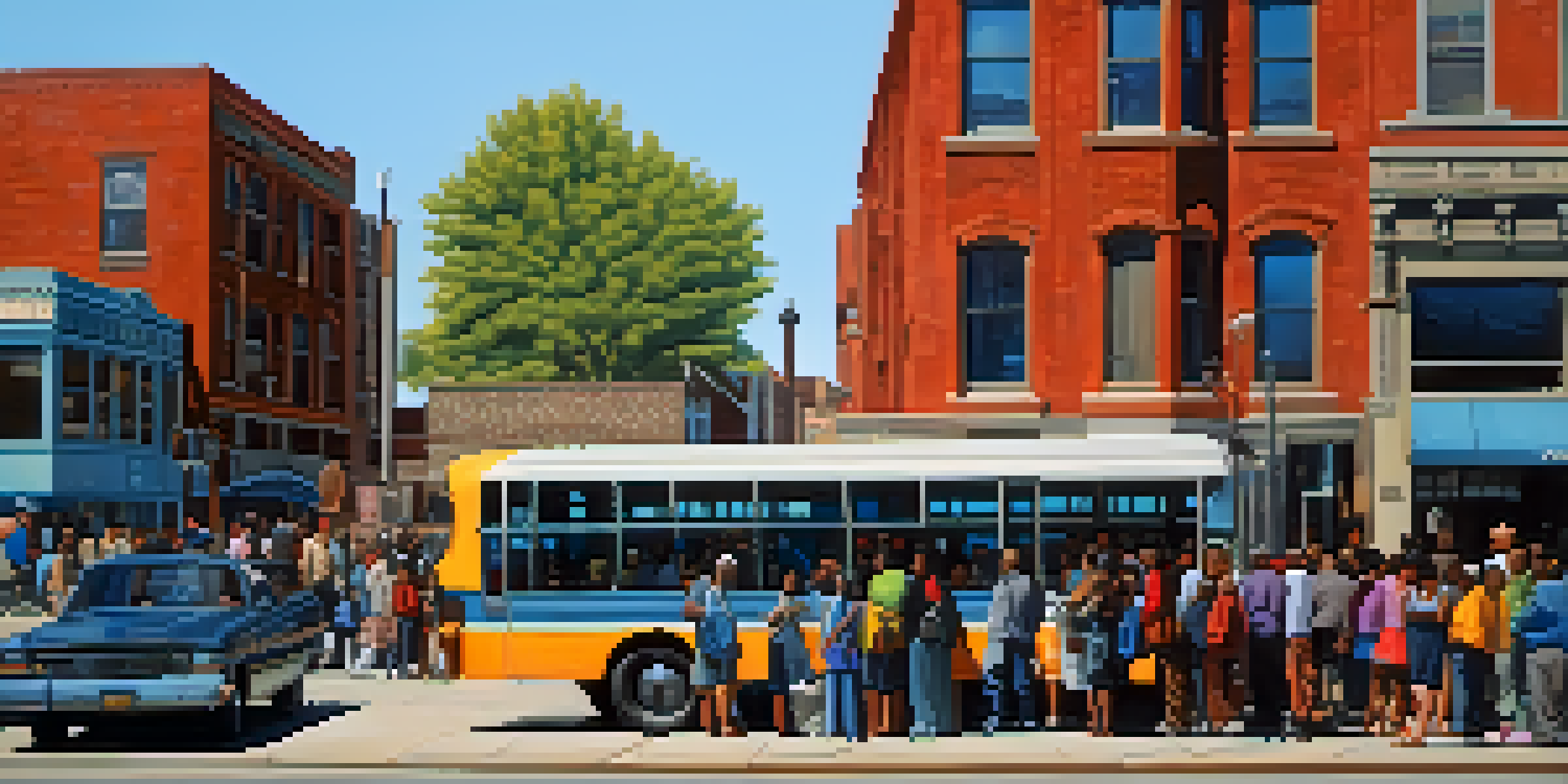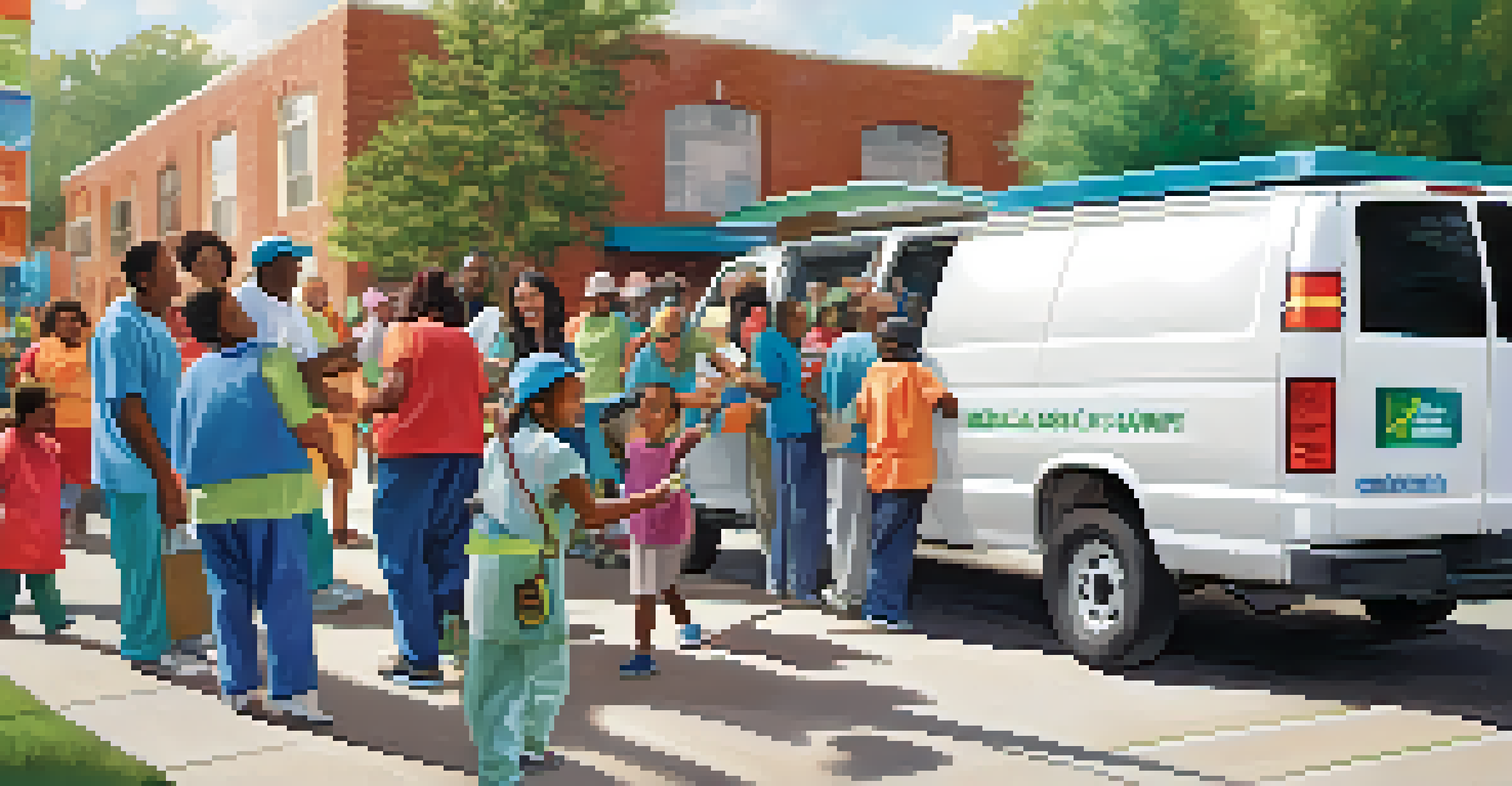The Impact of Transportation on Healthcare Access in Detroit

Overview of Transportation Challenges in Detroit
Transportation in Detroit presents a unique set of challenges that can significantly affect healthcare access. With its sprawling layout and limited public transit options, many residents struggle to reach medical facilities. This issue is particularly acute for low-income individuals and communities of color, who often rely on public transportation or lack personal vehicles altogether.
Transportation is the linchpin that connects people to the healthcare they need, especially in underserved communities.
In many parts of the city, buses run infrequently, leading to long wait times and limited service hours. This can make it difficult for patients to attend regular appointments or seek emergency care. As a result, some individuals may forego necessary medical attention due to the logistical hurdles involved in getting to their healthcare provider.
Moreover, with the ongoing changes in transportation infrastructure, there is a growing need to address these barriers. Improving public transit routes and schedules could make a significant difference in healthcare access, ultimately leading to better health outcomes for Detroit residents.
The Role of Public Transit in Healthcare Access
Public transportation serves as a lifeline for many Detroit residents, connecting them to essential healthcare services. For those without cars, buses and trains are often the only means to reach clinics and hospitals. However, the existing public transit system faces limitations, such as routes that do not directly serve major healthcare facilities.

This disconnect can lead to delays in treatment, especially for those with chronic conditions requiring regular visits. A patient with diabetes, for instance, may struggle to manage their health if they can't easily access their endocrinologist or a pharmacy that offers necessary medications. Such scenarios highlight the critical relationship between transportation and health management.
Transportation Hinders Healthcare Access
Many Detroit residents struggle to reach medical facilities due to limited public transit options, particularly affecting low-income individuals.
Enhancing public transit options could lead to improved health outcomes, as patients can maintain more consistent care. Increasing the frequency of buses and extending service hours would enable more individuals to seek the medical attention they need without the added stress of navigating a complex transit system.
Impact of Transportation on Emergency Care Access
In emergency situations, transportation can be a matter of life and death. In Detroit, the time it takes to reach a hospital can significantly impact patient outcomes, especially for conditions like heart attacks or strokes. If a patient cannot find reliable transportation quickly, their chances of survival decrease.
Access to healthcare is a fundamental right, and transportation challenges should never stand in the way of receiving the care you deserve.
Furthermore, the lack of immediate access to emergency services can deter individuals from calling for help when needed. People may hesitate to dial 911 if they are unsure how they will get to the hospital afterward. This fear can lead to dangerous delays in receiving critical care.
Addressing these transportation barriers is essential for improving emergency response in Detroit. Initiatives that provide rides to emergency rooms or partnerships with rideshare companies could help ensure that patients receive timely care when every second counts.
Rural vs. Urban Transportation Dynamics
The transportation dynamics in Detroit can differ greatly between urban and rural areas, impacting healthcare access. In urban neighborhoods, public transit might be more accessible, but the frequency and reliability can still pose challenges. On the other hand, residents in rural areas often face even greater obstacles due to longer distances and fewer public transportation options.
For those living in the outskirts of Detroit, reaching healthcare services can require significant planning and travel time. This can deter individuals from seeking routine check-ups or specialist appointments, contributing to health disparities. For example, a rural resident may need to take multiple buses and allocate several hours just to see a doctor.
Emergency Care Depends on Transport
Reliable transportation is crucial for timely emergency care, as delays can significantly impact patient outcomes during critical situations.
Bridging the gap between urban and rural transportation is crucial for equitable healthcare access. Solutions could include shuttle services or community-based transportation programs that cater specifically to those in underserved areas, ensuring everyone has the opportunity to receive the healthcare they need.
The Economic Implications of Poor Transportation
Poor transportation access not only affects health outcomes but also has economic implications for Detroit residents. When individuals struggle to reach healthcare services, they may experience worsened health, leading to increased medical expenses and loss of productivity. This cycle can perpetuate poverty and hinder economic mobility.
Employers also face challenges when their employees are unable to access necessary healthcare. Increased absenteeism due to health issues can result in decreased productivity and higher costs for businesses. Consequently, investing in better transportation options can yield positive economic benefits for the community as a whole.
Improving transportation infrastructure may foster a healthier workforce, leading to lower healthcare costs and enhanced economic growth. By prioritizing transportation solutions, Detroit can create an environment where residents are empowered to maintain their health and contribute positively to the economy.
Community Initiatives Addressing Transportation Issues
In response to transportation challenges, various community initiatives have emerged in Detroit to improve healthcare access. Local organizations are working to bridge the gap by providing transportation services for medical appointments. These programs often rely on volunteers or partnerships with rideshare companies to offer rides to those in need.
For instance, some nonprofits have developed programs where volunteers drive patients to their appointments, ensuring that transportation is one less barrier to healthcare access. This grassroots approach not only helps individuals but also fosters a sense of community and support among residents.
Community Initiatives Improve Access
Local organizations are stepping up by providing transportation services for medical appointments, helping to alleviate barriers to healthcare access.
Such initiatives are integral in addressing transportation disparities, but they often require ongoing funding and support. By raising awareness and encouraging community involvement, these programs can thrive and continue to make a meaningful impact on healthcare access in Detroit.
Future Directions for Transportation and Healthcare Access
Looking ahead, it’s essential to consider how Detroit can innovate in transportation to enhance healthcare access. Technology can play a pivotal role, with the potential for app-based solutions that help residents navigate public transit systems more effectively. Additionally, expanding partnerships between healthcare providers and transportation services could yield new models for addressing access issues.
Moreover, community input will be crucial in shaping transportation solutions that meet the needs of Detroit residents. Engaging local voices in planning processes ensures that the services developed are both relevant and effective. This participatory approach can empower communities to take ownership of their health and access to care.

As Detroit works to improve transportation infrastructure, it will be vital to keep health equity at the forefront. By prioritizing access for all residents, the city can create a healthier community where everyone has the opportunity to thrive.